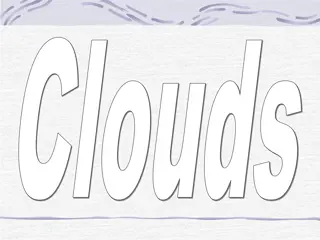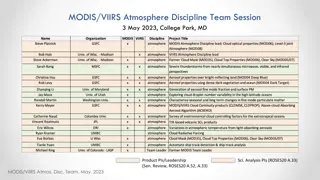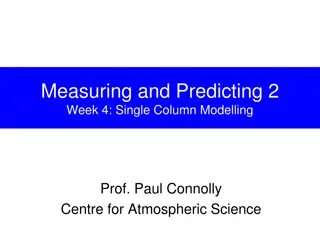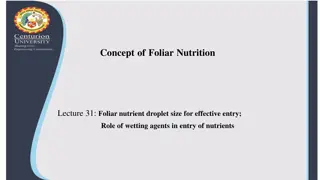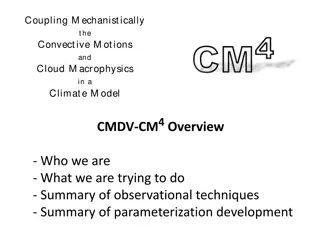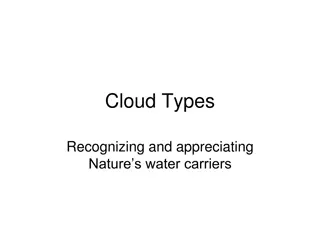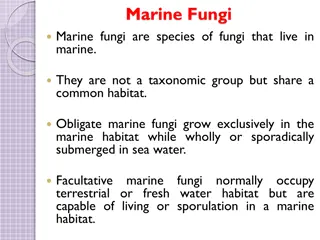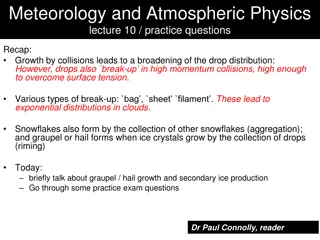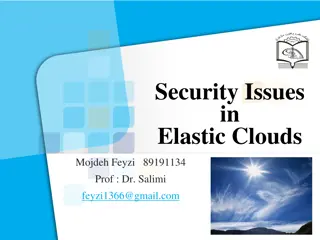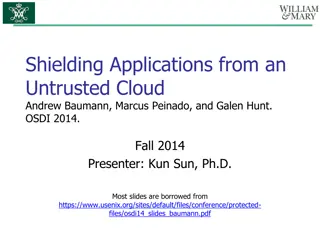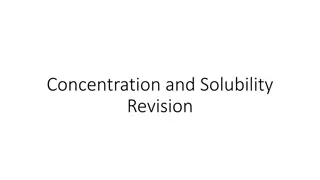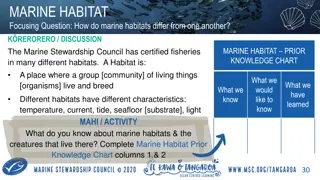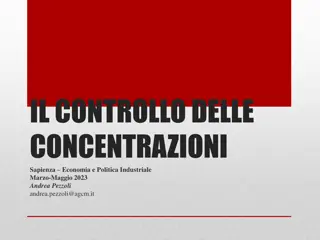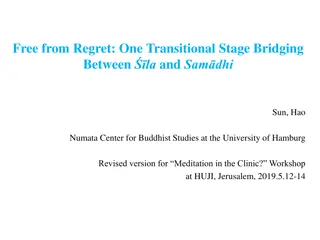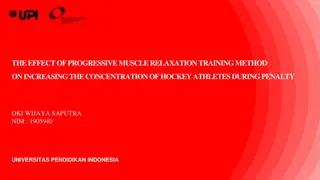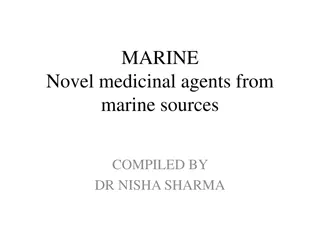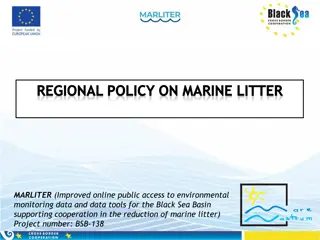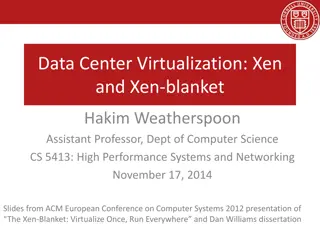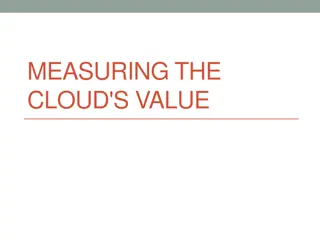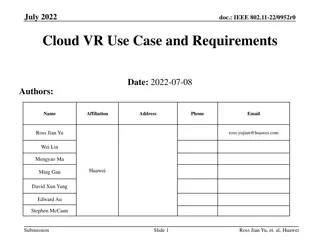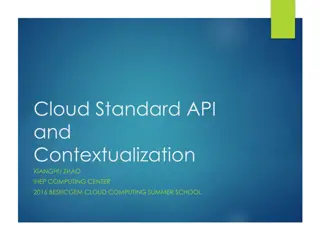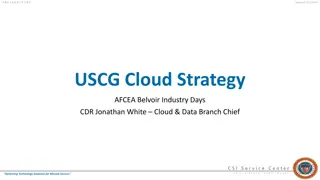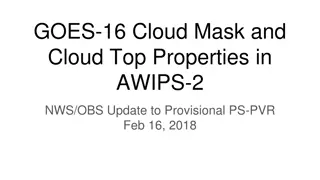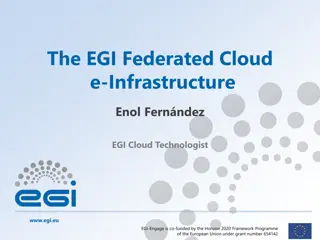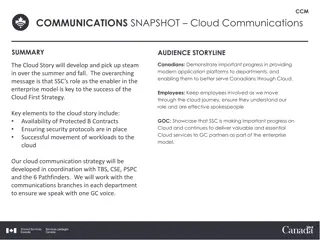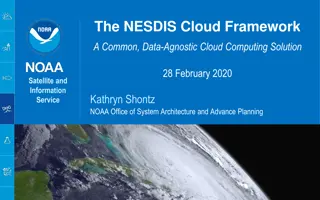Understanding Cloud Droplet Concentration in Marine Stratocumulus Clouds
Analysis of cloud droplet concentration's impact on aerosol indirect effects and cloud morphology transitions in marine stratocumulus clouds. Observations on drizzle-CCN coupling, MODIS estimation of cloud droplet concentration, and prevalence of drizzle in low clouds. Insights on CCN budget in the Marine Boundary Layer (MBL) model are also discussed.
Download Presentation

Please find below an Image/Link to download the presentation.
The content on the website is provided AS IS for your information and personal use only. It may not be sold, licensed, or shared on other websites without obtaining consent from the author. Download presentation by click this link. If you encounter any issues during the download, it is possible that the publisher has removed the file from their server.
E N D
Presentation Transcript
Control of Cloud Droplet Concentration in Marine Stratocumulus Clouds Robert Wood University of Washington Photograph: Tony Clarke, VOCALS REx flight RF07
Background cloud droplet concentration critical for determining aerosol indirect effects LAND OCEAN A ln(Nperturbed/Nunpertubed) Low Nd background strong Twomey effect High Nd background weaker Twomey effect Quaas et al., AEROCOM indirect effects intercomparison, Atmos. Chem. Phys., 2009
Extreme coupling between drizzle and CCN Southeast Pacific Drizzle causes cloud morphology transitions Depletes aerosols
MODIS-estimated mean cloud droplet concentrationNd Use method of Boers and Mitchell (1996), applied by Bennartz (2007) Screen to remove heterogeneous clouds by insisting on CFliq>0.6 in daily L3
Cloud droplet concentrations in marine stratiform low cloud over ocean The view from MODIS Latham et al., Phil. Trans. Roy. Soc. (2011)
200 observations Observed CCN/droplet concentration occurs in Baker and Charlson (B&C) drizzlepause region where CCN loss rates from drizzle are maximal, does not occur where CCN concentrations are stable (point A) Clouds in B&C too thick generate drizzle too readily Drizzle parameterization too thresholdy (precip suddenly cuts off when CCN loss rate [cm-3 day-1] 100 0 -100 -200 -300 -400 -500 10 100 1000 CCN concentration [cm-3] Baker and Charlson, Nature (1990)
Prevalence of drizzle from low clouds DAY NIGHT Drizzle occurrence = fraction of low clouds (1-4 km tops) for which Zmax> -15 dBZ Leon et al., J. Geophys. Res. (2008)
Simple CCN budget in the MBL Model accounts for: Entrainment Surface production (sea-salt) Coalescence scavenging Dry deposition Model does not account for: New particle formation significance still too uncertain to include Advection more later
Production terms in CCN budget Entrainment rate FT Aerosol concentration MBL depth Sea-salt Wind speed at 10 m parameterization-dependent constant
Loss terms in CCN budget: (1) Coalescence scavenging Constant Precip. rate at cloud base cloud thickness MBL depth Comparison against results from stochastic collection equation (SCE) applied to observed size distribution Wood, J. Geophys. Res., 2006
Loss terms in CCN budget: (2) Dry deposition Deposition velocity wdep= 0.002 to 0.03 cm s-1 (Georgi 1988) K = 2.25 m2 kg-1 (Wood 2006) For PCB = > 0.1 mm day-1 and h = 300 m = 3 to 30 For precip rates > 0.1 mm day-1, coalescence scavenging dominates
Observable constraints from A-Train Variable NFT Source Details Weber and McMurry (1996) & VOCALS in-situ observations (next slide) 150-200 cm-3 active at 0.4% SS in remote FT D ERA-40 Reanalysis Quikscat/Reanalysis CloudSat divergent regions in monthly mean - PRECIP-2C-COLUMN, Haynes et al. (2009) & Z-based retrieval U10 PCB h zi MODIS LWP, adiabatic assumption MODIS Ttop, CALIPSO ztop, COSMIC hydrolapse CALIPSO or MODIS or COSMIC
MODIS-estimated cloud droplet concentration Nd, VOCALS Regional Experiment Use method of Boers and Mitchell (1996) Applied to MODIS data by Bennartz (2007) Data from Oct-Nov 2008
Free tropospheric CCN source Weber and McMurry (FT, Hawaii) Continentally- influenced FT Remote background FT Data from VOCALS (Jeff Snider) S = 0.9% S=0.9% 0.5 0.25 S = 0.25% 0.1
Precipitation over the VOCALS region CloudSat Attenuation and Z-R methods VOCALS Wyoming Cloud Radar and in-situ cloud probes Significant drizzle at 85oW Very little drizzle near coast WCR data courtesy Dave Leon
Predicted and observed Nd, VOCALS Model increase in Nd toward coast is related to reduced drizzle and explains the majority of the observed increase Very close to the coast (<5o) an additional CCN source is required Even at the heart of the Sc sheet (80oW) coalescence scavenging halves the Nd Results insensitive to sea-salt flux parameterization
Predicted and observed Nd Monthly climatological means (2000-2009 for MODIS, 2006-2009 for CloudSat) Derive mean for locations where there are >3 months for which there is: (1) positive large scale div. (2) mean cloud top height <4 km (3) MODIS liquid cloud fraction > 0.4 Use 2C-PRECIP-COLUMN and Z-R where 2C-PRECIP- COLUMN missing
Predicted and observed Nd - histograms Minimum values imposed in GCMs
Reduction of Nd from precipitation sink Precipitation from midlatitude low clouds reduces Nd by a factor of 5 In coastal subtropical Sc regions, precip sink is weak 0 10 20 50 100 150 200 300 500 1000 2000 %
Sea-salt source strength compared with entrainment from FT
Precipitation closure precipitation rate at cloud base [mm/day] Precipitation rate dependent upon: cloud macrophysical properties (e.g. thickness, LWP); microphysical properties (e.g. droplet conc., CCN) from Brenguier and Wood (2009)
Conclusions Simple CCN budget model, constrained with precipitation rate estimates from CloudSat predicts MODIS-observed cloud droplet concentrations in regions of persistent low level clouds with some skill. Entrainment of constant self-preserving aerosols from FT (and sea-salt in regions of stronger mean winds) can provide sufficient CCN to supply MBL. No need for internal MBL source (e.g. from DMS). Significant fraction of the variability in Nd across regions of extensive low clouds is likely related to drizzle sinks rather than source variability => implications for aerosol indirect effects
Range of observed and modeled CCN/droplet concentration in Baker and Charlson drizzlepause region where loss rates from drizzle are maximal Baker and Charlson source rates Baker and Charlson, Nature (1990)
Timescales to relax for N Entrainment: Surface: sfc Precip: zi/(hKPCB) = 8x10^5/(3*2.25) = 1 day for PCB=1 mm day-1 dep zi/wdep - typically 30 days Nzi 4 . 3 10 / U
Can dry deposition compete with coalescence scavenging? wdep= 0.002 to 0.03 cm s-1 (Georgi 1988) K = 2.25 m2 kg-1 (Wood 2006) For PCB = > 0.1 mm day-1 and h = 300 m = 3 to 30 For precip rates > 0.1 mm day-1, coalescence scavenging dominates
Examine MODIS Nd imagery fingerprinting of entrainment sources vs MBL sources.



